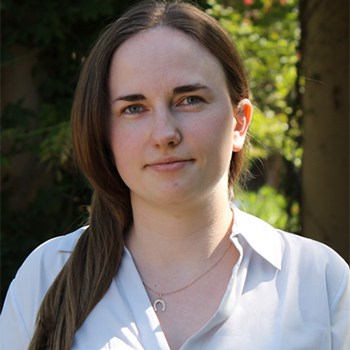Location
111 EWRE
2350 Hayward, Ann Arbor, MI 48109-2125
Phone
Primary Website
Education
- Ph.D., Stanford University, Stanford, CA 2020
- M.S., Stanford University, Stanford, CA, 2016
- B.S., Princeton University, Princeton, NJ, 2014
Research Interests
The goal of my research is to provide safe and sustainable water for all. Water scarcity, caused by climate change and increasing global population, drives water utilities to use impaired water sources to meet water demands. Determining the best practices for treating impaired water sources is an evolving challenge. In my approach, I use fundamental chemistry to inform how we can protect public health while using impaired water sources to meet water demands. Specifically, I focus on:
- Reducing the chronic health risks associated with chemicals of emerging concern in impaired water sources
- Reducing the acute health risks associated with pathogens in impaired water sources
- Developing emerging engineering controls that can lower impaired water treatment costs, making treatment accessible to all
Check out the lab Instagram (@basementlabrat
Awards
- Presidential Postdoctoral Fellowship: University of Michigan, 2020
- American Water Works Association Abel Wolman Graduate Fellowship, 2019
- National Science Foundation Graduate Research Fellowship (NSF-GRFP), 2015
- Charles H. Leavell Graduate Fellowship, 2015
Selected Publications
Szczuka, A., Berglund-Brown, J., Macdonald, J.A., Mitch, W.A. (2021). Control of sulfides and coliphage MS2 using hydrogen peroxide and UV disinfection for non-potable reuse of pilot-scale anaerobic membrane bioreactor effluent. Water Research X 11, 100097.
Szczuka, A., Huang, N. (co-first author ), Macdonald, J.A., Nayak, A., Zhang, Z., Mitch, W.A. (2020). N -nitrosodimethylamine (NDMA) formation during UV/hydrogen peroxide and UV/chlorine advanced oxidation process treatment following reverse osmosis for potable reuse. Environmental Science & Technology 54, 15465-15475.
Szczuka, A., Chuang, Y., Chen, F., Zhang, Z., Desormeaux, E., Flynn, M., Parodi, J., Mitch, W.A. (2020). Removal of pathogens and chemicals of emerging concern by pilot-scale FO-RO hybrid units treating RO concentrate, graywater, and sewage for centralized and decentralized potable water reuse. Environmental Science & Technology: Water 1, 89-100.
Szczuka, A., Berglund-Brown, J., Chen H., Quay, A., Mitch, W.A. (2019). Evaluation of a pilot anaerobic secondary effluent for potable reuse: impact of different disinfection schemes on organic fouling of RO membranes and DBP formation. Environmental Science & Technology 53, 3166-3176.
Chuang, Y., Szczuka, A., Mitch, W.A. (2019). Comparison of toxicity-weighted disinfection byproduct concentrations in potable reuse waters to conventional drinking waters as a new approach to assess the quality of advanced treatment train waters. Environmental Science & Technology 53, 3729-3738.
Szczuka, A., Parker, K.M., Harvey, C., Hayes, E., Vengosh, A., Mitch, W.A. (2017). Regulated and unregulated halogenated disinfection byproduct formation from chlorination of saline groundwater. Water Research 122, 633-644.
Szczuka, A., Morel, F.M., Schaefer, J.K. (2015). Effect of thiols, zinc, and redox conditions on Hg uptake in Shewanella oneidensis. Environmental Science & Technology 49, 7432-7438.
Personal Pronouns
She/Her/Hers
